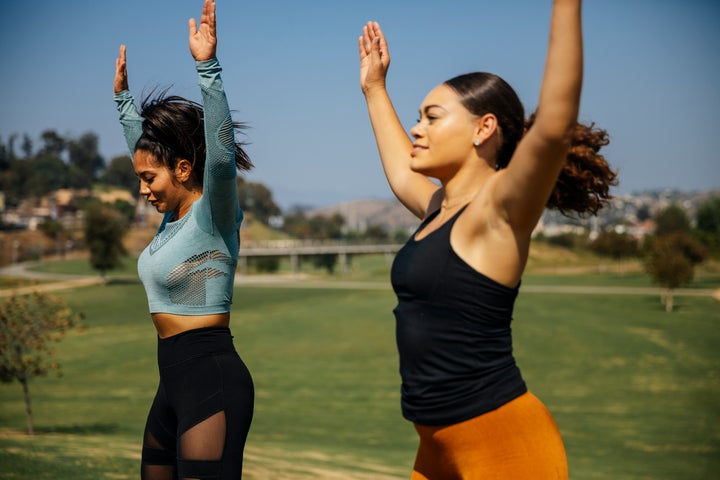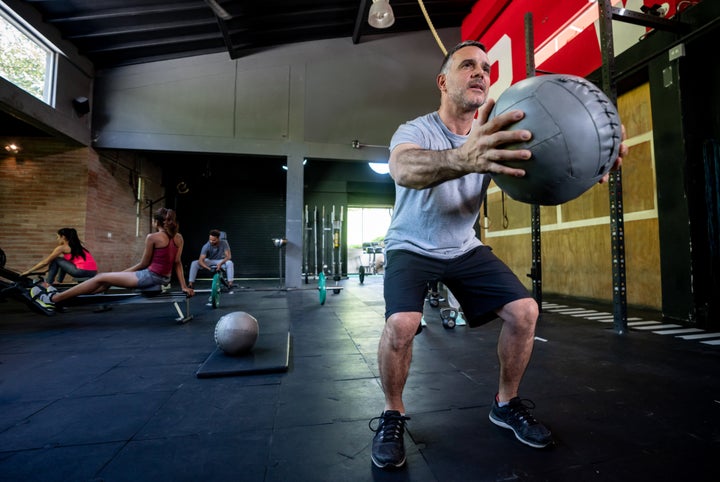
When it comes to health, the importance of fitness is near the top of the list.
Exercise is good for many different reasons. It directly affects all of the factors that go into a long, healthy life — mobility, heart health, brain health, muscle strength and more, said Jonathan Zins, a physical therapist at Ohio State University’s Wexner Medical Center.
Exercise also contributes to the cycle of healthy aging. And, according to experts, there are a few types you should do if you are hoping to boost your longevity. Here’s what they are:
Cardiovascular Exercise
Cardiovascular exercise — like running, biking, dancing, boxing and more — is full of benefits that can help you age well.
Cardiovascular activity focuses on strengthening your heart. “Nothing else really can strengthen it better than a cardio workout,” said Sandra Corcione, a personal trainer at FITloft Gym in New Jersey.
Specifically, aerobic exercise can lower your risk for heart disease (which is the No. 1 killer of American adults). It also helps lower blood pressure and your risk of diabetes, which are two heart disease risk factors.
Beyond this, cardiovascular exercise also is good for brain health, Zins said. “The brain responds very quickly to exercise. Just three hours of aerobic exercise a week can greatly increase brain perfusion — so, getting more blood supply up to the brain and reducing inflammation.”
Working out may even help prevent some cases of dementia, Zins noted. In fact, according to the U.K.-based Alzheimer’s Society, you can reduce your risk of dementia by roughly 28% by doing regular exercise.
When doing aerobic exercise, you want to be out of breath, Zins added. Your heart rate should be at 60% to 80% of your heart rate max, which can be calculated online or through a fitness tracker. For example, if your max heart rate is 185 beats per minute, a heart rate of 111 to 148 would put you in that 60% to 80% target.
Or you can do the “talk test” to determine where your heart rate is. “If you’re having difficulty having a conversation because you have to take lots of breaths to get your oxygen supply up, that’s a good sign that you’re working at a moderate to vigorous intensity. But if you’re able to have a conversation... you know the intensity is really not high enough,” Zins said.
Strength Training
“Weightlifting helps you maintain bone mass, bone density and muscle mass,” according to Corcione, which are three areas known to deteriorate as you age.
What’s more, strength training can help with falls, which are an unfortunate reality for many older people.
“The reason why falls are so bad is because we can get broken bones,” Zins explained. “An 80-year-old is estimated to have about 40% of the muscle strength as a 20-year-old, but that’s not just because our muscles magically disappear when we get older. A lot of that is because we stop moving when we get older, and we stop using our muscles.”
“There’s a very well-established body of evidence saying that progressive resistance training is safe and effective in older adults,” he continued.
If you’ve never lifted weights before, he suggests working with a health care professional to get started safely. Additionally, you can look into strength training classes in your community.
Experts can help you determine the right weight for you to lift. Something too light won’t challenge you, while something too heavy could lead to injury.
Balance Training
“Falls are the greatest cause of [injury-related] death in folks over 65 and 1 in 3 older adults are going to fall every single year,” Zins said. Falls can also lead to impaired mobility in older folks, “and when we’re not mobile, we’re not able to live our lives how we want to,” he added. “Mobility is essential for living a good life.”
Exercise helps keep you mobile and, specifically, balance training can be an effective way to avoid falls. Balance training is varied but can include activities like tennis, standing on one leg and tai chi, Zins said.
However, it’s important that you don’t dive into balance training if you are older or feel like your balance is already off. “I would say go to a physical therapist, where they can give you an individualised plan, and then follow that up with just a community exercise class that works specifically on balance,” Zins explained. “Because nobody wants to be fearful of losing their balance when they’re in the comfort of their own home.”
Partner Workouts
Social connection is a major part of aging well and living a long life, Zins stressed. When compared to people who live with family or in a community, people who live alone live shorter lives. If you can join an exercise class in your community, you’ll benefit not only from the exercise, but from social connection, too.

The Best Workout Is One That Keeps You Active
In reality, many folks don’t like certain workouts — whether it’s strength training or balance work or aerobic exercise — and don’t do exercise at all as a result.
“My opinion is that people should do what they enjoy,” Corcione said. Whatever activity keeps you moving regularly and consistently is the workout you should prioritise. Don’t let a distaste for strength training keep you from exercising altogether. If you like dancing, do that. Or if you are a fan of running, do that.
No matter what you decide to do, it’s important to commit to enough exercise each week. “Our catchphrase is 150 plus two, so 150 minutes of moderate to vigorous intensity exercise, plus two days of strength training is going to be the recommendation,” Zins said.
“The key here is to stay consistent with that activity ... the gains happen when you consistently do something for years and throughout your life, even as you get older,” Corcione noted.